DATA MINING - the automated processing of large amounts of DATA in order to extract KNOWLEDGE - clandestine and hidden patterns, trends, correlations, etc, by using various methods of statistics, data analysis, and machine learning
Monica Lupașcuにより


1. Data Science
1.1. a multifaceted discipline, which encompasses machine learning, statistics and related branches of mathematics, increasingly borrows from high performance scientific computing, all in order to ultimately
1.1.1. EXTRACT INSIGHT from DATA and USE this new found information to tell stories
2. Artificial Intelligence
2.1. systems that display intelligent behaviour by
2.1.1. ANALYSING their environment and TAKING actions with some degree of autonomy - to achieve specific goals
2.2. The mined data (and the accompanying patterns and hypotheses) can then be used as the basis for both artificial intelligence and machine learning.
2.3. data mining, artificial intelligence, and machine learning are so intertwined that it’s difficult to establish a ranking or hierarchy between the three. Instead, they’re involved in symbiotic relationships by which a combination of methods can be used to produce more accurate results. Data mining is an integral part of coding programs with the information, statistics, and data necessary for AI to create a solution.
3. Knowledge Discovery in Databases (KDD)
3.1. the overall process of discovering
3.1.1. useful knowledge from data
4. Data Analysis
4.1. is used to TEST models and Hypothesis on the dataset - such us the effectiveness of a marketing campaign
4.2. in contrast, data mining uses machine-learning and statistical models to uncover CLANDESTINE or HIDDEN patterns in a large volume of data.
4.3. Data mining is the process of extracting nontrivial and potentially useful information, or knowlege, from the enormous data sets available in experimental sciences (historical records, reanalysis, GCM simulations, etc.), providing explicit information that has a readable form and can be used to solve diagnosis, classification or forecasting problems. Traditionally, these problems were solved by direct hands-on data analysis using standard statistical methods, but the increasing volume of data has motivated the study of automatic data analysis using more complex and sophisticated tools which can operate directly from data. Thus, data mining identifies trends within data that go beyond simple analysis.
4.4. Data analysis refers to the process of examining, transforming and arranging a given data set in specific ways in order to study its individual parts and extract useful information.
5. Pattern Recognition
5.1. the automated recognition of
5.1.1. PATTERNS and REGULARITIES in Data
5.2. the process of recognizing
5.2.1. PATTERNS by using machine learning algorithm
5.3. the classification of data based on knowledge already gained or on statistical information extracted from patterns and/or their representation
5.4. “The act of taking in raw data and taking an ‘action’ based on the ‘category’ of the pattern ”
5.5. Data Mining – produce insight and understanding about the structure of large observational datasets – e.g.
5.5.1. Find interesting relationships
5.5.2. Summarize the data in new ways that are understandable and actionable
6. Statistics
6.1. a component of data mining that provides the tools and analytics techniques for dealing with large amounts of data. It is the science of
6.1.1. LEARNING from DATA and includes everything from COLLECTING and ORGANISING to ANALYSING and presenting data.
